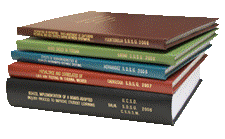Libraries, University of Nebraska-Lincoln

Archival Master’s Theses from the University of Nebraska-Lincoln
First Advisor
Zoya Avrimova
Date of this Version
2004
Document Type
Thesis
Citation
Thesis (M.S.)--University of Nebraska-Lincoln, 2004.
Abstract
Genes that regulate the activity of homeotic genes belong to the negative (PcG) and the positive (TrxG) epigenetic regulators. Until recently, they were thought to exist in animals only. This idea was challenged when homologs of the PcG/TrxG families were found to regulate development in Arabidopsis. The Trithorax homolog, ATX1, regulates (activates) homeotic genes involved in plant organ identity. At the molecular level, ATX1 functions as histone methyltransferase and chromatin modifier, defining it as an epigenetic regulator. There are five Trithorax genes in Arabidopsis. Plants often have multiple related genes, forming gene families, but it has not been established whether same family member genes play redundant, or highly specialized similar functions. With this purpose in mind, we initiated studies of ATX1 and ATX2, the two most highly related representatives. I have obtained an Arabidopsis line mutant in atx2 and have extensively characterized the T-DNA insertion by PCR-analysis to isolate homozygous atx2 plants. Possible phenotypic aberrations were examined and a subtle phenotype was recognized. A similar phenotype was previously shown to result from downregulation of a transcription factor, NAP, regulated by two flower homeotic genes. When tested in atx2 mutant plants, I demonstrated that loss-of-ATX2 function abolishes NAP expression in different plant tissues. The result indicates that wild type ATX2 positively regulates this gene and, thus, functions as an activator. Lastly, I have expressed the GUS gene under the control of ATX2 promoter (two constructs carrying promoter sequences of different lengths were generated) in transgenic Arabidopsis plants and have defined that ATX2 is expressed in a tissue specific pattern-in roots, leaves, and in the anthers of the stamens. Obtained results provide a ground for comprehensive further studies of ATX2 function and comparisons with ATX1.


Comments
Copyright 2004, the author. Used by permission.